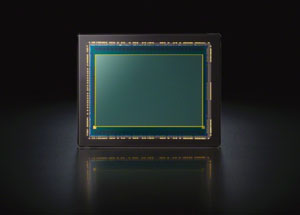Who doesn’t want to own a Leica. Their optics are unmatched, yet the technology, well, you can’t shoot ISO 25,800 with a Leica, can you. They just don’t have the sensors for that. Now here’s an anecdote I got from a reliable source; an anecdote that makes complete sense without knowing whether it’s true or not. It is said that some two years ago Leica was in contact with Sony — right, the makers of the industry’s currently probably leading imaging sensor technology. Leica was thinking of using Sony sensor technology, first and foremost for the Leica M. Apparently the Japanese offered the Germans not the latest technology, but a stage below. Leica said no. From what I understand is that Leica today regrets its decision.
No one does as Sony does. The Japanese understand like no one else in the industry the importance of technology prowess as key to achieving a dominant role in the highly competitive digital imaging industry. Leica meanwhile, as you all know, teamed up with the unknown Belgian company CMOSIS to produce the “heart” of their flagship Leica M, a sensor designed by Leica itself. Yet — and this is the main reason why we’ll have to wait quite a bit for major new announcements — Leica doesn’t have the sensor technology they want. TBH, the Sony sensor’s not a perfect match for Leica glass because of specific microlenses, peripheral light fall-off and other issues. Yet in the end, isn’t digital photography all about the sensor. The Pentax 645Z‘s CMOS imager, for instance, might even smoke the new CMOS Leica S from what I hear. For a fraction of the price.

You don’t have to be a rocket scientist to know that the one controls digital photography who delivers the sensor technology, processing speed and current drain, the three key issues to digital imaging. Today’s best sensors probably come from Sony. They seem to master image processing like no other, partially on-sensor and also thanks to elaborate algorithms. Sony outruns them all. Take the A7S. A consumer camera. Practically seeing at night.
There is much more to photography than technological progress, just to mention passion and soul. Sony cameras aren’t objects of desire. They’re rather functional, modernist tools, yet they deliver. And, to be honest, even Fujifilm, Olympus et al, their signal noise, dynamic range and processing speeds are better than a Leica’s.
Still, even with Leica’s profits going down recently, they’re the industry’s most lucrative player. Limited supply controls price, that’s one key to its success, and Leica pays dealers some of the industry’s best commissions. Add a distributor and that, in part, explains the cameras’ steep price.
Yet, from what one hears, there have been better times within the paternalistically operated company. Some call the current mood downright depressive. Blackstone has de facto become the majority shareholder of Leica, “convincing” chairman Dr. Kaufmann to “dilute” his 40% share and play a more secondary role.
Blackstone wants less of the creative romp and a more structured approach to future products, more profit and more stability — while Leica is struggling to get that next sensor. For the time being “new” models will be remodeled, visually upgraded existing technology.
But yes, we’ll see an amazing new CMOS Leica S, likely to be announced on September 15. State of the art. Available sometime in spring next year.


